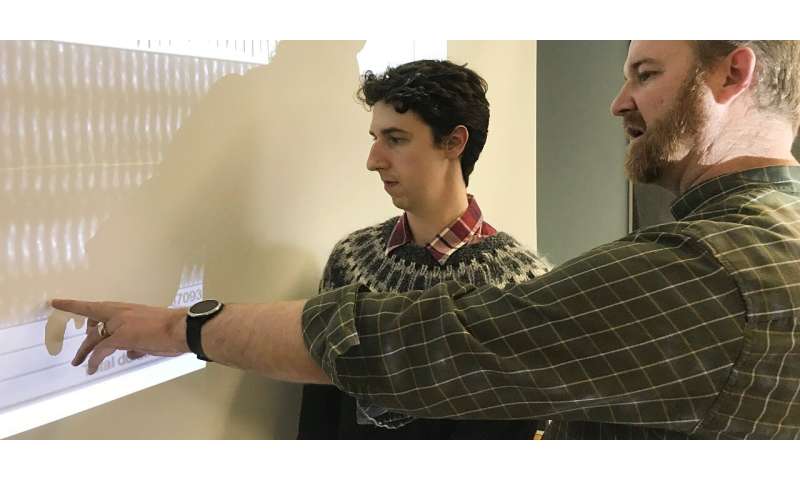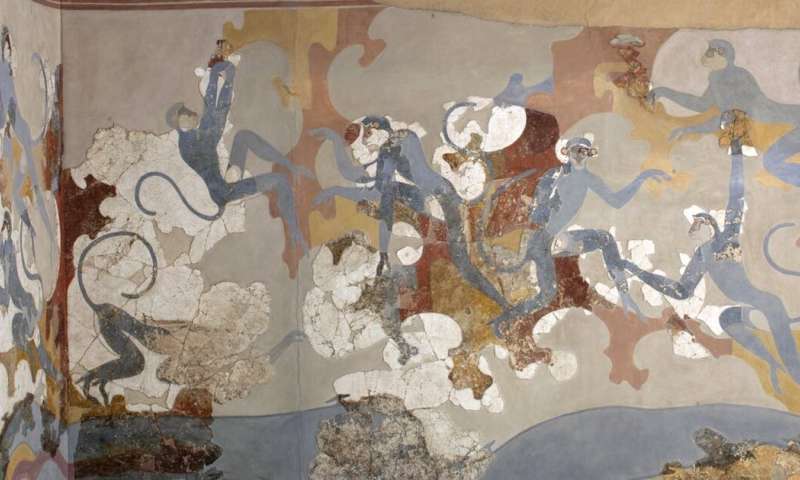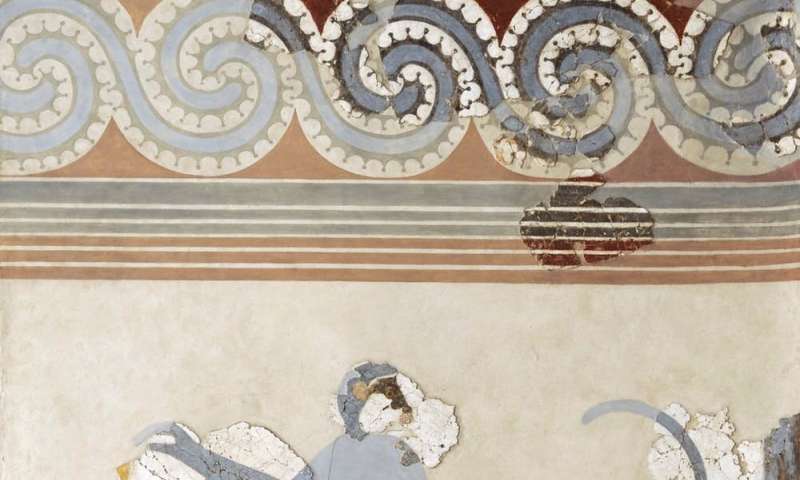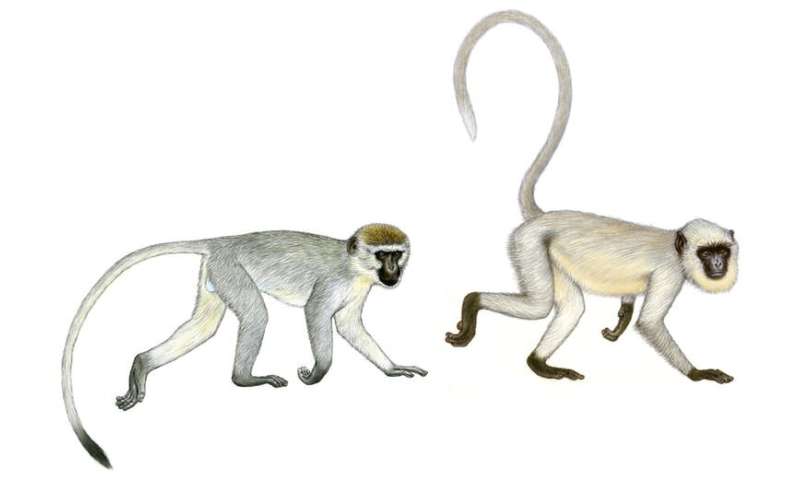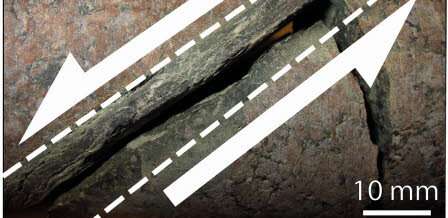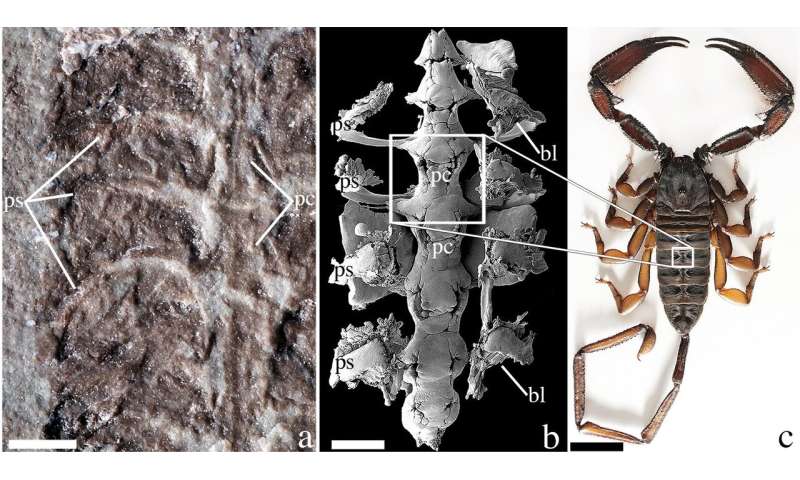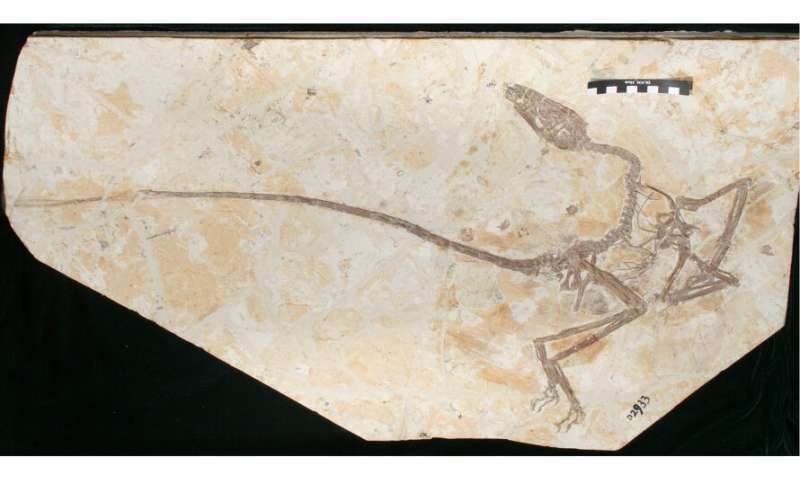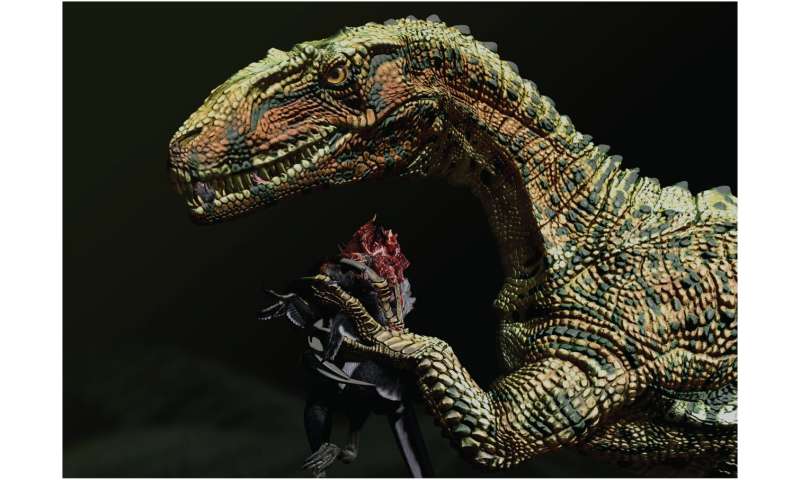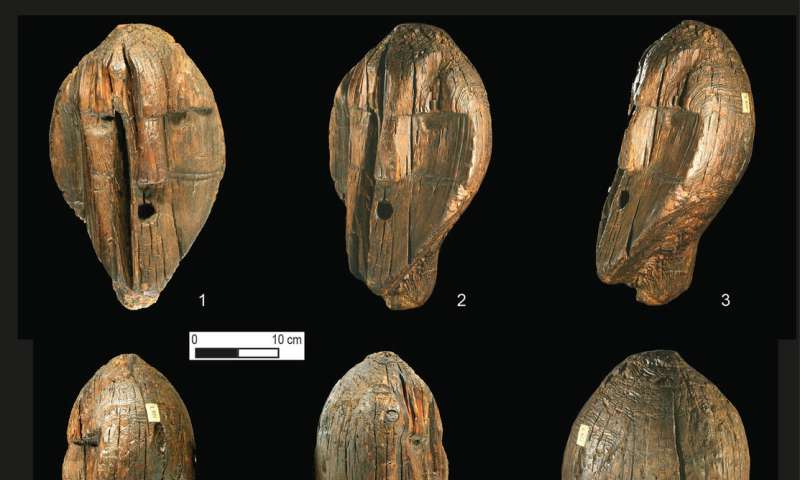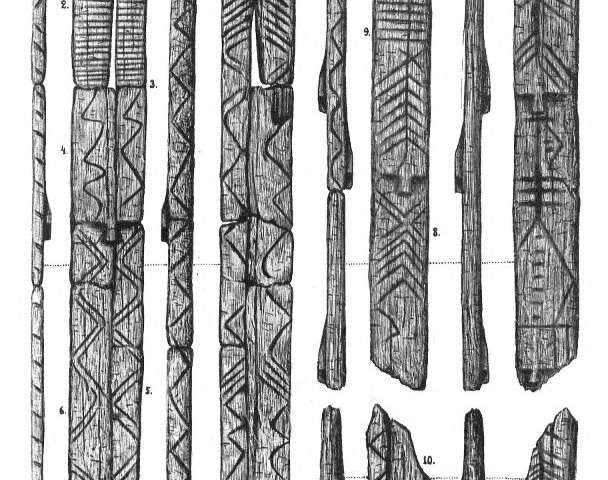Being copycats might be key to being human

Chimpanzees, human beings' closest animal relatives, share up to 98% of our genes. Their human-like hands and facial expressions can send uncanny shivers of self-recognition down the backs of zoo patrons.
Yet people and chimpanzees lead very different lives. Fewer than 300,000 wild chimpanzees live in a few forested corners of Africa today, while humans have colonized every corner of the globe, from the Arctic tundra to the Kalahari Desert. At more than 7 billion, humans' population dwarfs that of nearly all other mammals—despite our physical weaknesses.
What could account for our species' incredible evolutionary successes?
One obvious answer is our big brains. It could be that our raw intelligence gave us an unprecedented ability to think outside the box, innovating solutions to gnarly problems as people migrated across the globe. Think of "The Martian," where Matt Damon, trapped alone in a research station on Mars, heroically "sciences" his way out of certain death.
But a growing number of cognitive scientists and anthropologists are rejecting that explanation. These researchers think that, rather than making our living as innovators, human beings survive and thrive precisely because we don't think for ourselves. Instead, people cope with challenging climates and ecological contexts by carefully copying others – especially those we respect. Instead of Homo sapiens, or "man the knower," we're really Homo imitans: "man the imitator."
Watching and learning
In a famous study, psychologists Victoria Horner and Andrew Whiten showed two groups of test subjects—children and chimpanzees—a mechanical box with a treat inside. In one condition, the box was opaque, while in the other it was transparent. The experimenters demonstrated how to open the box to retrieve a treat, but they also included the irrelevant step of tapping on the box with a stick.
Oddly, human children carefully copied all the steps to open the box, even when they could see that the stick had no practical effect. That is, they copied irrationally: Instead of doing only what was necessary to get their reward, children slavishly imitated every action they'd witnessed.
Of course, that study only included three- and four-year-olds. But additional research has showed that older children and adults are even more likely to mindlessly copy others' actions, and young infants are less likely to over-imitate—that is, to precisely copy even impractical actions.
By contrast, chimpanzees in Horner and Whiten's study only over-imitated in the opaque condition. In the transparent condition—where they saw that the stick was mechanically useless—they ignored that step entirely, merely opening the box with their hands. Other research has since supported these findings.
When it comes to copying, chimpanzees are more rational than human children or adults.
The benefits of following without question
Where does the seemingly irrational human preference for over-imitation come from? In his book "The Secret of Our Success," anthropologist Joseph Henrich points out that people around the world rely on technologies that are often so complex that no one can learn them rationally. Instead, people must learn them step by step, trusting in the wisdom of more experienced elders and peers.
For example, the best way to master making a bow is by observing successful hunters doing it, with the assumption that everything they do is important. As an inexperienced learner, you can't yet judge which steps are actually relevant. So when your band's best hunter waxes his bowstring with two fingers or touches his ear before drawing the string, you copy him.
The human propensity for over-imitation thus makes possible what anthropologists call cumulative culture: the long-term development of skills and technologies over generations. No single person might understand all the practical reasons behind each step to making a bow or carving a canoe, much less transforming rare earth minerals into iPhones. But as long as people copy with high fidelity, the technology gets transmitted.
Ritual and religion are also domains in which people carry out actions that aren't connected in a tangible way with practical outcomes. For example, a Catholic priest blesses wafers and wine for Communion by uttering a series of repetitive words and doing odd motions with his hands. One could be forgiven for wondering what on Earth these ritualistic acts have to do with eating bread, just as a chimpanzee can't see any connection between tapping a stick and opening a box.
But rituals have a hidden effect: They bond people to one another and demonstrate cultural affiliation. For an enlightening negative example, consider a student who refuses to stand for the Pledge of Allegiance. Her action clearly telegraphs her rejection of authorities' right to tell her how to behave. And as anthropologist Roy Rappaport pointed out, ritual participation is binary: Either you say the pledge or you don't. This clarity makes it easily apparent who is or isn't committed to the group.
Surprise secret ingredient that makes us human
In a broader sense, then, over-imitation helps enable much of what comprises distinctively human culture, which turns out to be much more complicated than mechanical cause and effect.
At heart, human beings are not brave, self-reliant innovators, but careful if savvy conformists. We perform and imitate apparently impractical actions because doing so is the key to learning complex cultural skills, and because rituals create and sustain the cultural identities and solidarity we depend on for survival. Indeed, copying others is a powerful way to establish social rapport. For example, mimicking another's body language can induce them to like and trust you more.
So the next time you hear someone arguing passionately that everyone should embrace nonconformity and avoid imitating others, you might chuckle a bit. We're not chimpanzees, after all.
More information: Cristine H. Legare et al. Imitation and Innovation: The Dual Engines of Cultural Learning, Trends in Cognitive Sciences (2015). DOI: 10.1016/j.tics.2015.08.005
Victoria Horner et al. Causal knowledge and imitation/emulation switching in chimpanzees (Pan troglodytes) and children (Homo sapiens), Animal Cognition (2004). DOI: 10.1007/s10071-004-0239-6
Rohan Kapitány et al. Adopting the ritual stance: The role of opacity and context in ritual and everyday actions, Cognition (2015). DOI: 10.1016/j.cognition.2015.08.002
Mark Nielsen. The Social Glue of Cumulative Culture and Ritual Behavior, Child Development Perspectives (2018). DOI: 10.1111/cdep.12297
